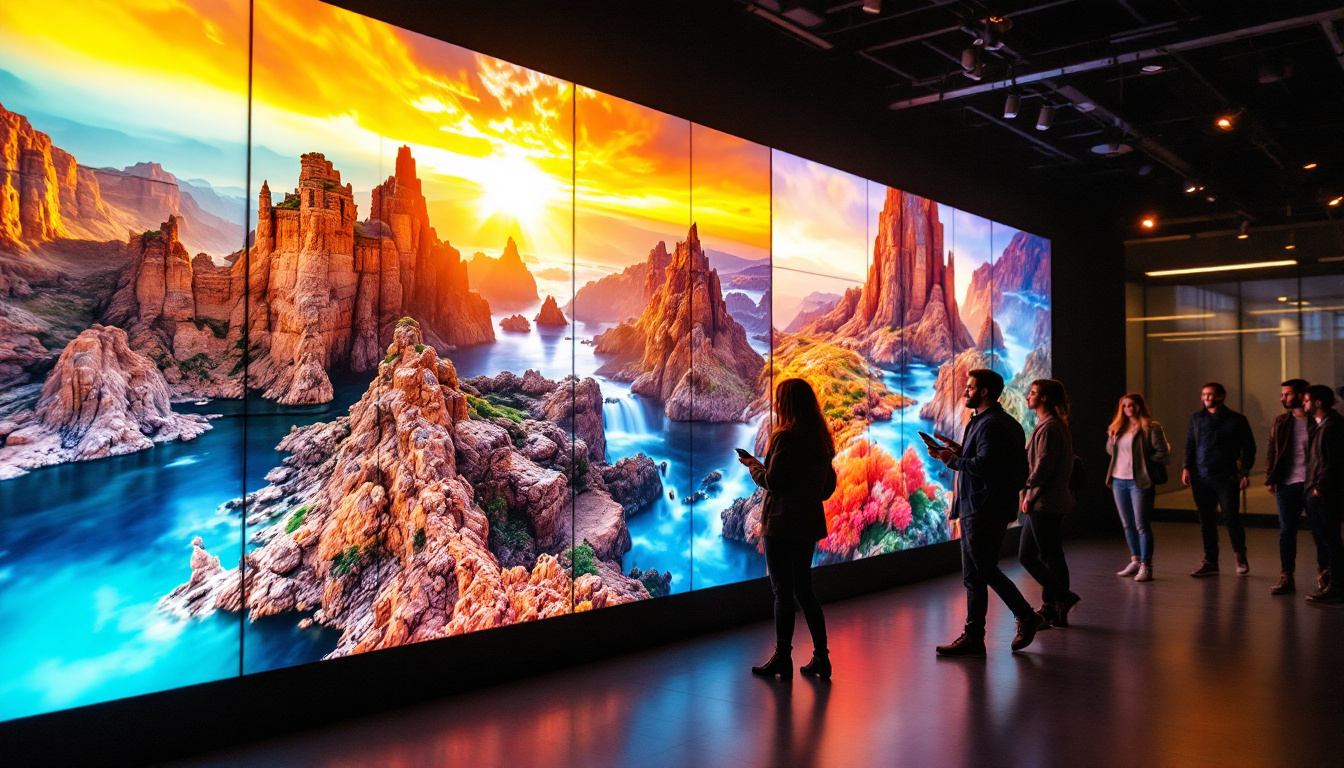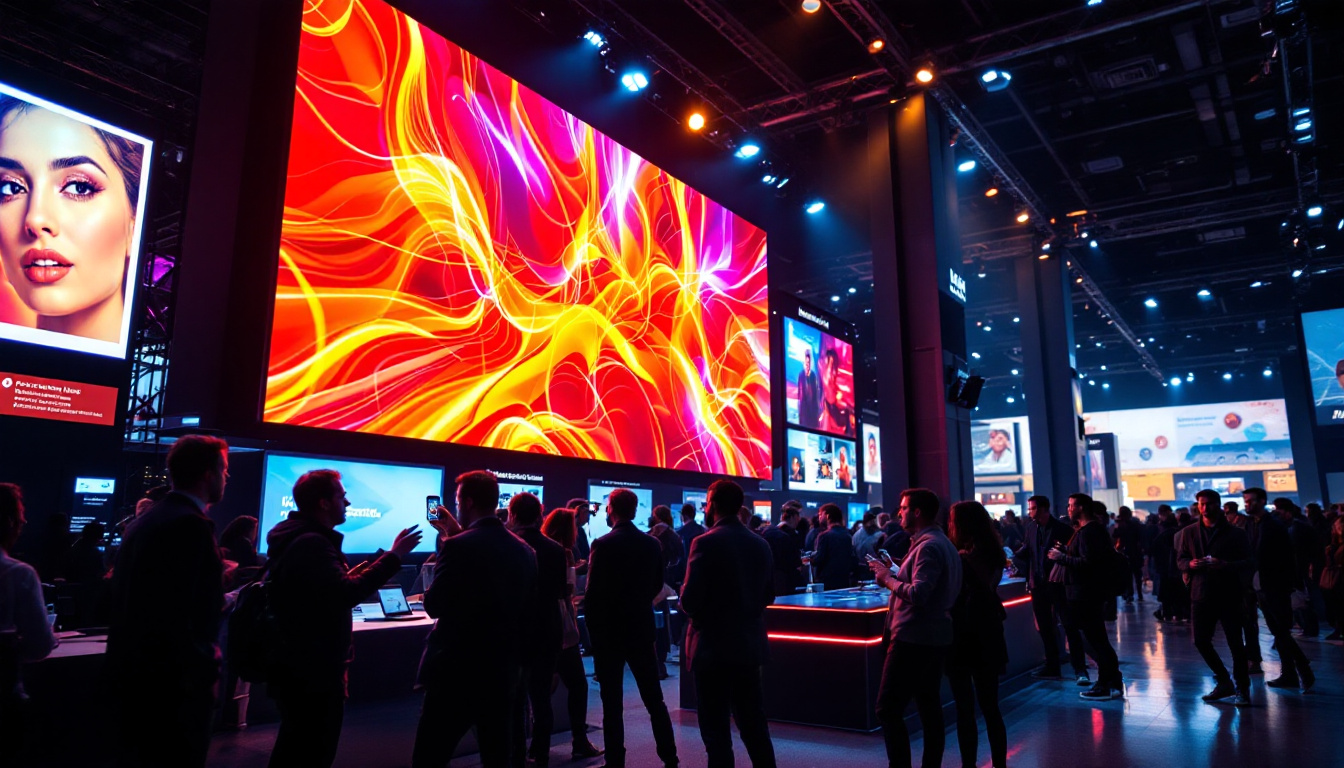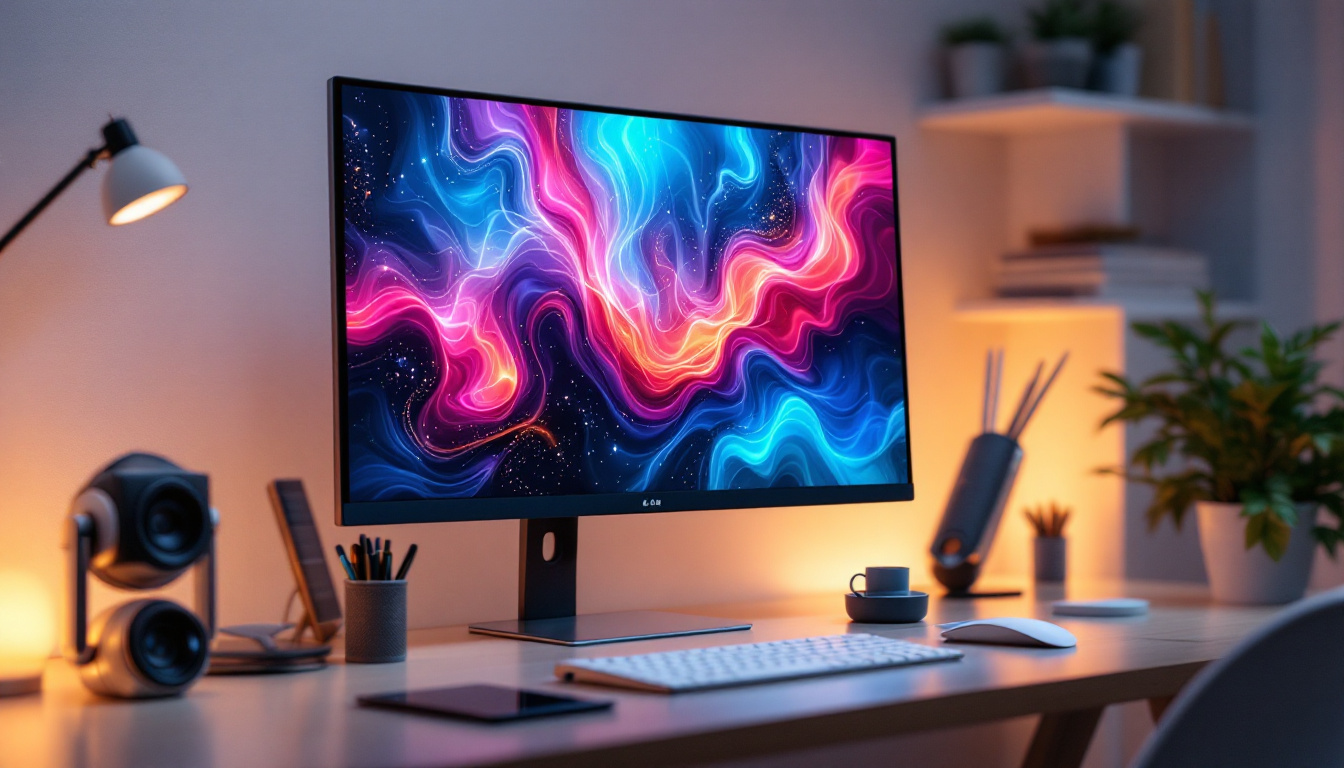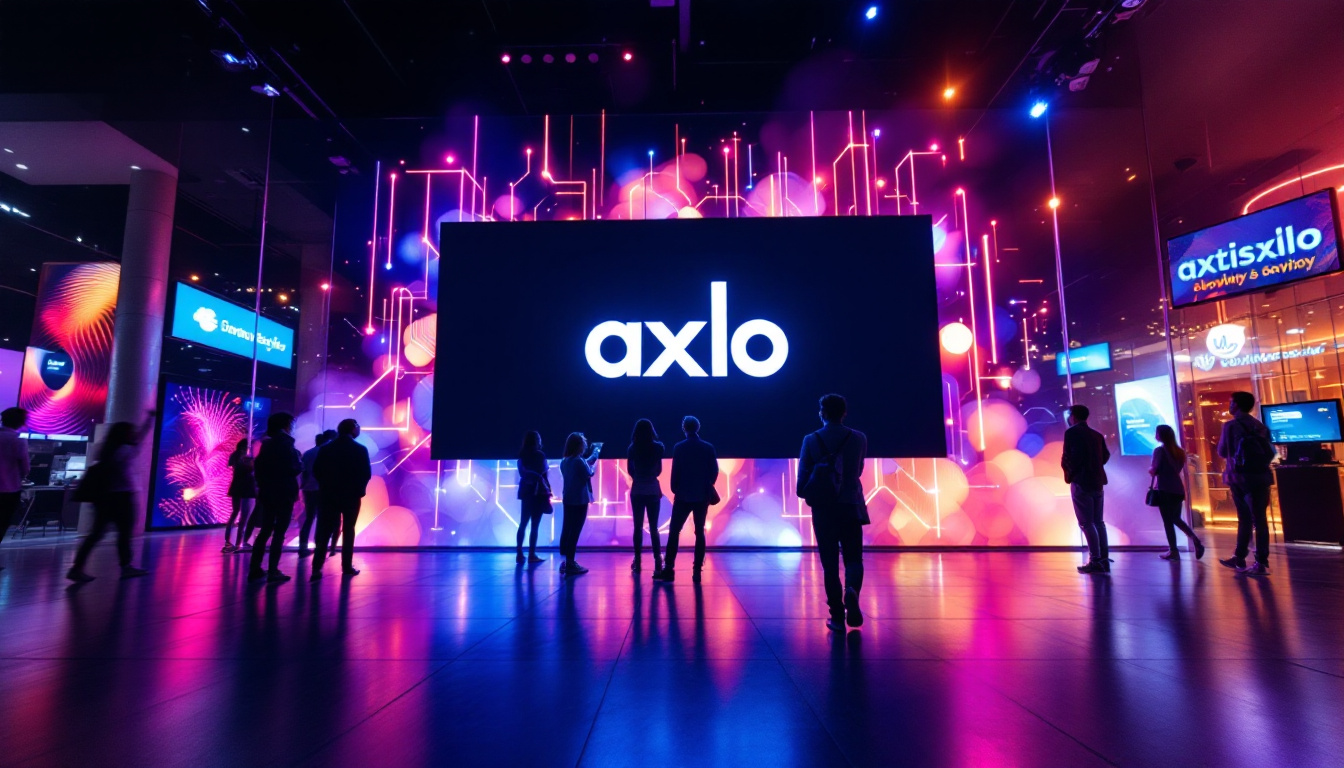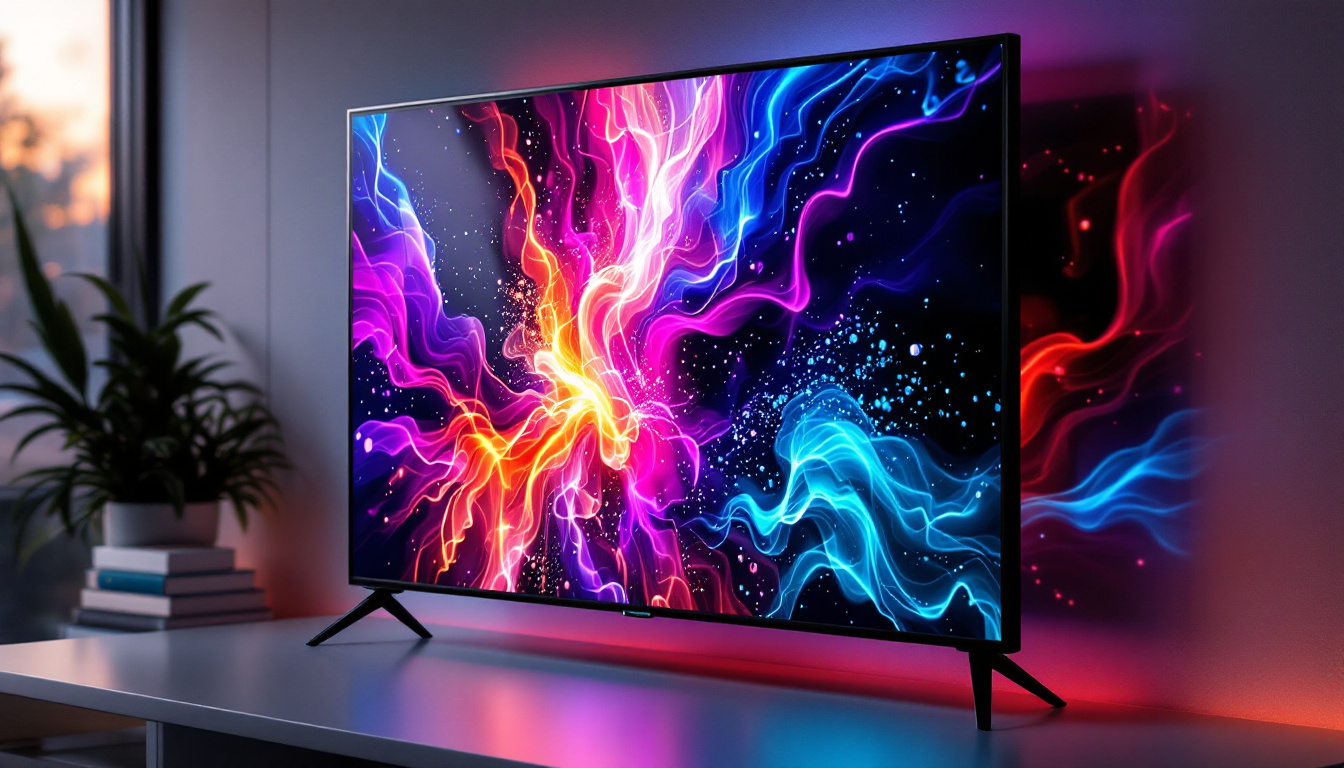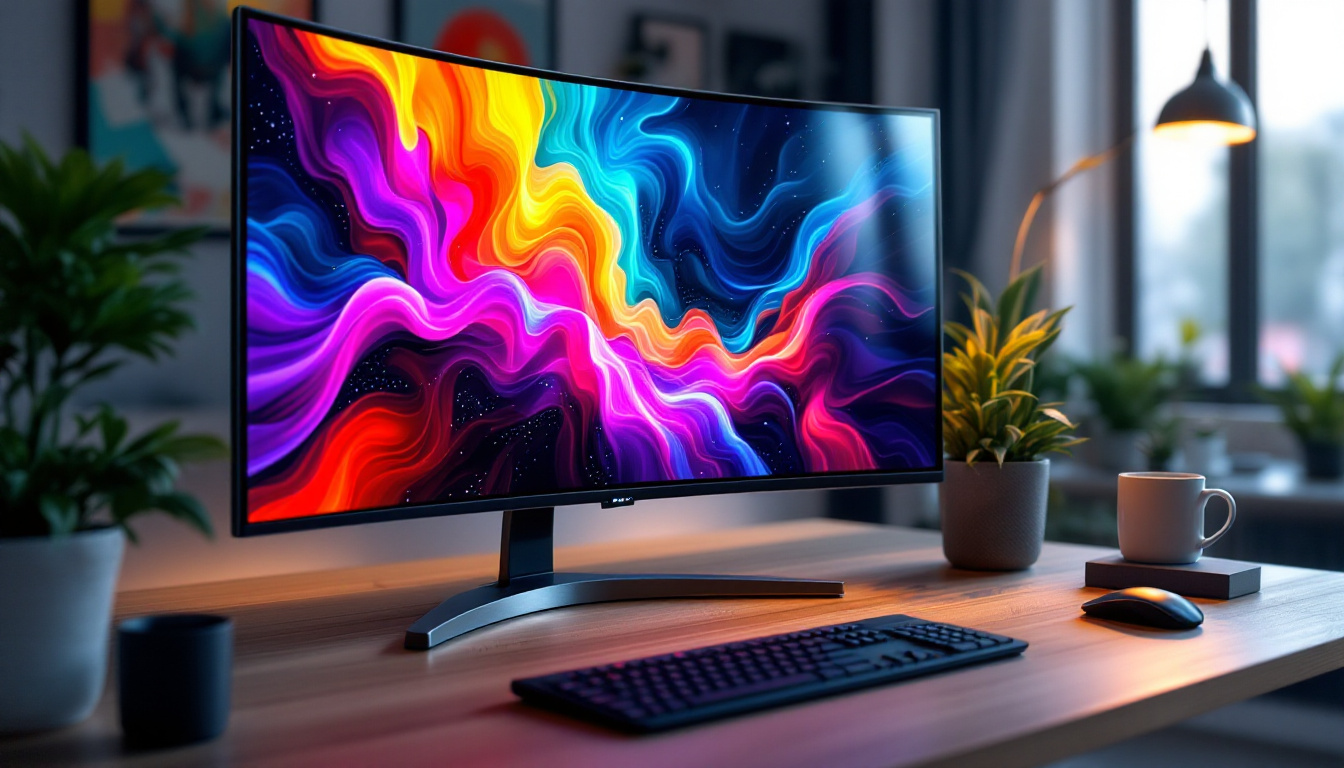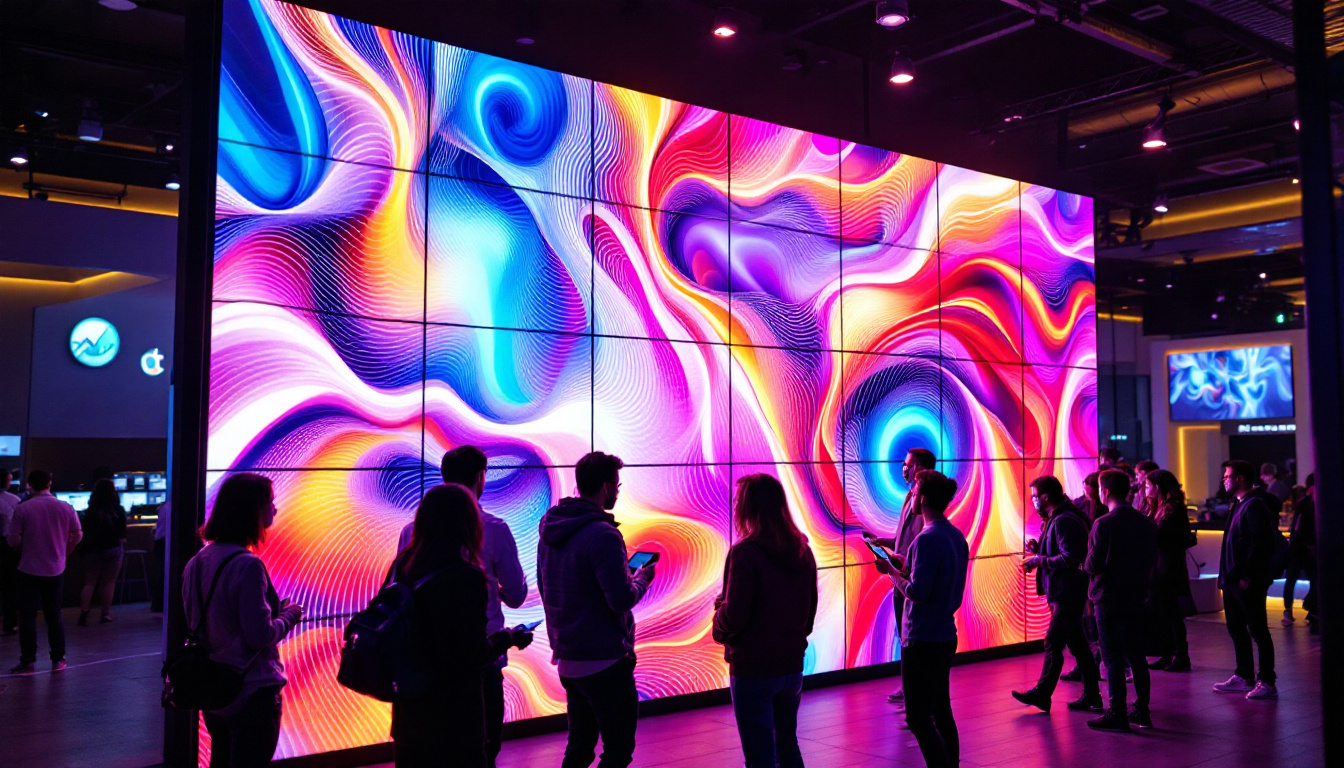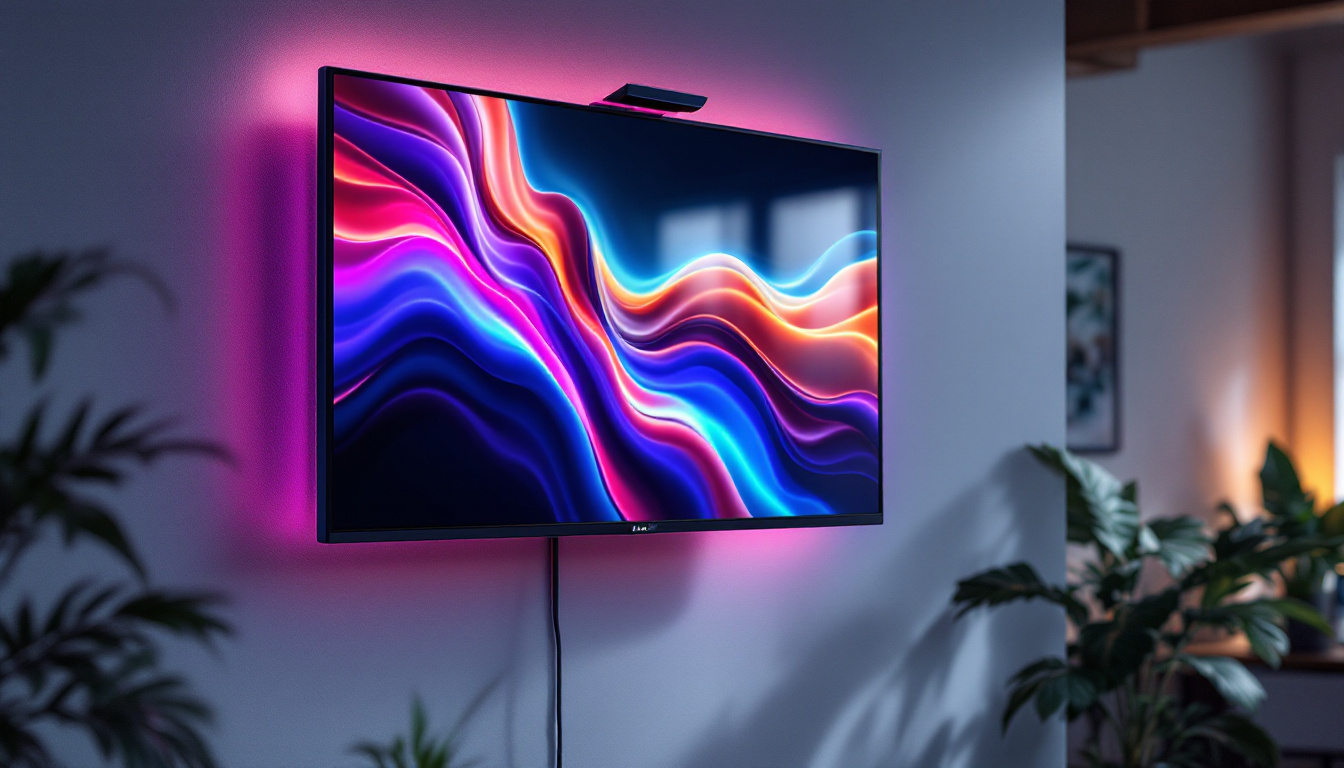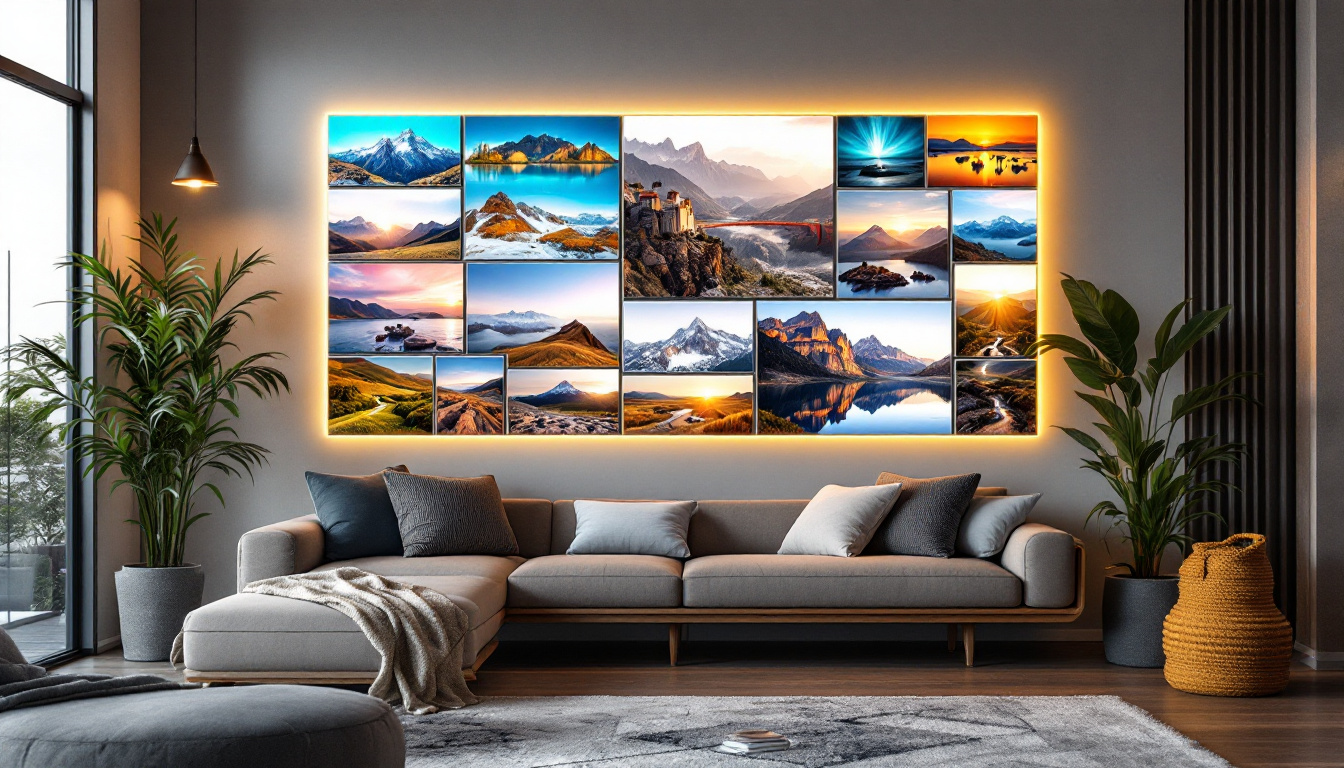Video Wall TV Screens Price: LED Display Explained
In recent years, video wall TV screens have gained significant popularity across various sectors, including retail, entertainment, and corporate environments. These impressive displays, often composed of multiple screens working in unison, create a larger-than-life visual experience. However, understanding the pricing structure and the factors influencing the cost of LED displays can be quite challenging. This article delves into the intricacies of video wall pricing, the technology behind LED displays, and the considerations for businesses looking to invest in this innovative technology.
Understanding Video Walls
Video walls are essentially a collection of multiple screens arranged in a grid-like pattern to form a single large display. They are designed to provide high-impact visuals, making them ideal for advertising, presentations, and immersive experiences. The technology behind video walls has evolved significantly, leading to the emergence of LED displays as the preferred choice for many applications.
What is LED Technology?
LED, or Light Emitting Diode, technology utilizes small diodes to produce light. In the context of video walls, LED displays are known for their brightness, energy efficiency, and ability to produce vibrant colors. Unlike traditional LCD screens, which rely on backlighting, LED screens emit light directly, resulting in deeper blacks and enhanced contrast ratios.
LED technology can be further categorized into two main types: direct view and backlit. Direct view LED displays are composed of individual LED modules that can be arranged to create large screens, while backlit displays use LED lights to illuminate an LCD panel. For video walls, direct view LED technology is typically favored due to its superior performance and flexibility in configuration.
Applications of Video Walls
Video walls are versatile and can be found in various settings. In retail environments, they are used to showcase products and promotions, drawing customers’ attention with dynamic content. In corporate settings, video walls serve as powerful tools for presentations, data visualization, and internal communications.
Entertainment venues, such as theaters and concert halls, utilize video walls to enhance the audience experience, providing stunning visuals that complement performances. Additionally, control rooms and command centers rely on video walls for real-time monitoring and data analysis, making them indispensable in critical operations.
Moreover, educational institutions have begun to embrace video walls as a means of enhancing the learning experience. In classrooms and lecture halls, these displays can be used to present interactive lessons, videos, and collaborative projects, fostering a more engaging environment for students. The ability to display multiple sources of information simultaneously allows educators to create a dynamic and informative atmosphere that can cater to various learning styles.
In the realm of public spaces, video walls are increasingly being integrated into urban landscapes. From large-scale installations in city centers to digital billboards that convey important information or artistic displays, these video walls contribute to the vibrancy of public life. They not only serve commercial purposes but also enhance community engagement by showcasing local events, news, or public service announcements, thereby creating a sense of connection among residents.
Factors Influencing Video Wall Pricing
The cost of video wall TV screens can vary significantly based on several factors. Understanding these elements is essential for businesses to make informed decisions when investing in this technology.
Screen Size and Configuration
The size of the video wall is one of the most significant factors affecting its price. Larger screens require more individual panels, which increases the overall cost. Additionally, the configuration of the screens—whether they are arranged in a 2×2, 3×3, or larger grid—also plays a role in pricing. Custom configurations may incur additional costs for installation and calibration.
Moreover, the resolution of the screens is crucial. Higher resolution displays, such as 4K or even 8K, provide sharper images and finer details, but they come at a premium price. Businesses must weigh the benefits of higher resolution against their budget constraints and specific use cases. For example, a retail store might prioritize vibrant visuals to attract customers, while a corporate office may focus on functionality and clarity for presentations. Understanding the intended application can help determine the optimal balance between size, resolution, and cost.
Technology and Features
The type of LED technology used in the video wall significantly impacts pricing. For instance, fine-pitch LED displays, which have a smaller pixel pitch, offer higher resolution and better image quality but are more expensive than standard pitch displays. Additionally, features such as HDR (High Dynamic Range), advanced color calibration, and built-in processing capabilities can further elevate costs. These advanced features enhance the viewing experience, making them particularly valuable in environments where visual impact is paramount, such as museums or high-end retail spaces.
Other technological considerations include the brightness level of the displays. Higher brightness levels are necessary for environments with significant ambient light, such as retail stores or outdoor settings. Displays with enhanced brightness capabilities typically come with a higher price tag. Furthermore, the longevity and energy efficiency of the technology can also influence long-term costs; investing in more efficient models may lead to savings on energy bills and reduced replacement frequency, making them a more economical choice over time.
Installation and Maintenance Costs
Installation is another critical factor that can influence the overall cost of a video wall. The complexity of the installation process, including mounting, wiring, and configuration, can vary based on the environment and the specific setup required. Professional installation services are recommended to ensure optimal performance and safety, and these services can add to the overall expense. Additionally, the location of the installation can impact costs; for example, installing a video wall in a high-ceilinged venue may require specialized equipment and expertise, further driving up expenses.
Maintenance costs should also be considered. Regular maintenance is essential to keep the video wall functioning optimally, which may involve periodic calibration, cleaning, and potential repairs. Businesses should factor in these ongoing costs when budgeting for a video wall installation. Moreover, the availability of service contracts or warranties can provide peace of mind and help manage unexpected expenses. Some vendors offer comprehensive support packages that include regular check-ups and quick response times for repairs, which can be invaluable for businesses that rely heavily on their video wall for daily operations or marketing initiatives.
Comparing Video Wall Prices
When evaluating video wall pricing, it is crucial to compare different options and vendors. Prices can vary widely based on brand reputation, technology used, and additional services offered. Here are some key points to consider when comparing video wall prices:
Vendor Reputation
Choosing a reputable vendor can significantly impact the quality and reliability of the video wall. Established brands often provide better customer support, warranties, and service agreements. While their products may come at a higher initial cost, the long-term benefits can outweigh the upfront investment.
Researching customer reviews and case studies can provide insights into the performance and durability of a vendor’s products. Engaging with other businesses that have implemented similar solutions can also offer valuable perspectives on vendor reliability.
Package Deals and Bundles
Many vendors offer package deals that include not only the video wall screens but also the necessary hardware and software for operation. These bundles can provide significant savings compared to purchasing components separately. Additionally, some vendors may offer financing options or leasing arrangements, making it easier for businesses to manage their budgets.
It is advisable to ask vendors about any ongoing promotions or discounts, as well as potential add-ons that may enhance the overall value of the purchase.
Cost of Ownership Considerations
While the initial purchase price of a video wall is an important factor, businesses should also consider the total cost of ownership (TCO). This includes not only the purchase price but also installation, maintenance, and operational costs over the lifespan of the display.
Energy Efficiency
Energy consumption is a critical aspect of the total cost of ownership. LED displays are generally more energy-efficient than traditional LCD screens, leading to lower electricity bills. However, the brightness and size of the display can still impact energy costs. Investing in energy-efficient models can yield long-term savings and contribute to a company’s sustainability goals.
Longevity and Durability
The lifespan of a video wall is another crucial factor in determining its overall cost-effectiveness. High-quality LED displays typically have a longer lifespan, often exceeding 100,000 hours of use. This durability translates to lower replacement costs and less frequent downtime.
Additionally, businesses should consider the warranty and support services offered by the vendor. A robust warranty can provide peace of mind and protect against unexpected repair costs, further enhancing the value of the investment.
Conclusion
Investing in a video wall TV screen can be a transformative decision for businesses looking to enhance their visual communication capabilities. Understanding the pricing structure and the various factors influencing costs is essential for making an informed choice. From screen size and technology to installation and maintenance, each element plays a crucial role in the overall investment.
By carefully evaluating options, comparing vendors, and considering the total cost of ownership, businesses can find the right video wall solution that meets their needs and budget. As technology continues to advance, video walls will likely become even more integral to effective communication and engagement across various industries.
Ultimately, the right video wall can not only elevate a company’s visual presence but also drive customer engagement and improve operational efficiency, making it a worthwhile investment in today’s competitive landscape.
Discover LumenMatrix’s Advanced LED Display Solutions
Ready to take your visual communication to the next level? Explore LumenMatrix’s comprehensive range of LED display solutions, designed to captivate your audience and amplify your message. From vibrant Indoor and Outdoor LED Wall Displays to innovative options like Vehicle LED Displays and LED Transparent Displays, LumenMatrix offers tailored solutions that fit your unique needs. Embrace the future of digital signage with our cutting-edge technology and make a lasting impression. Check out LumenMatrix LED Display Solutions today and transform your space into a dynamic visual experience.

